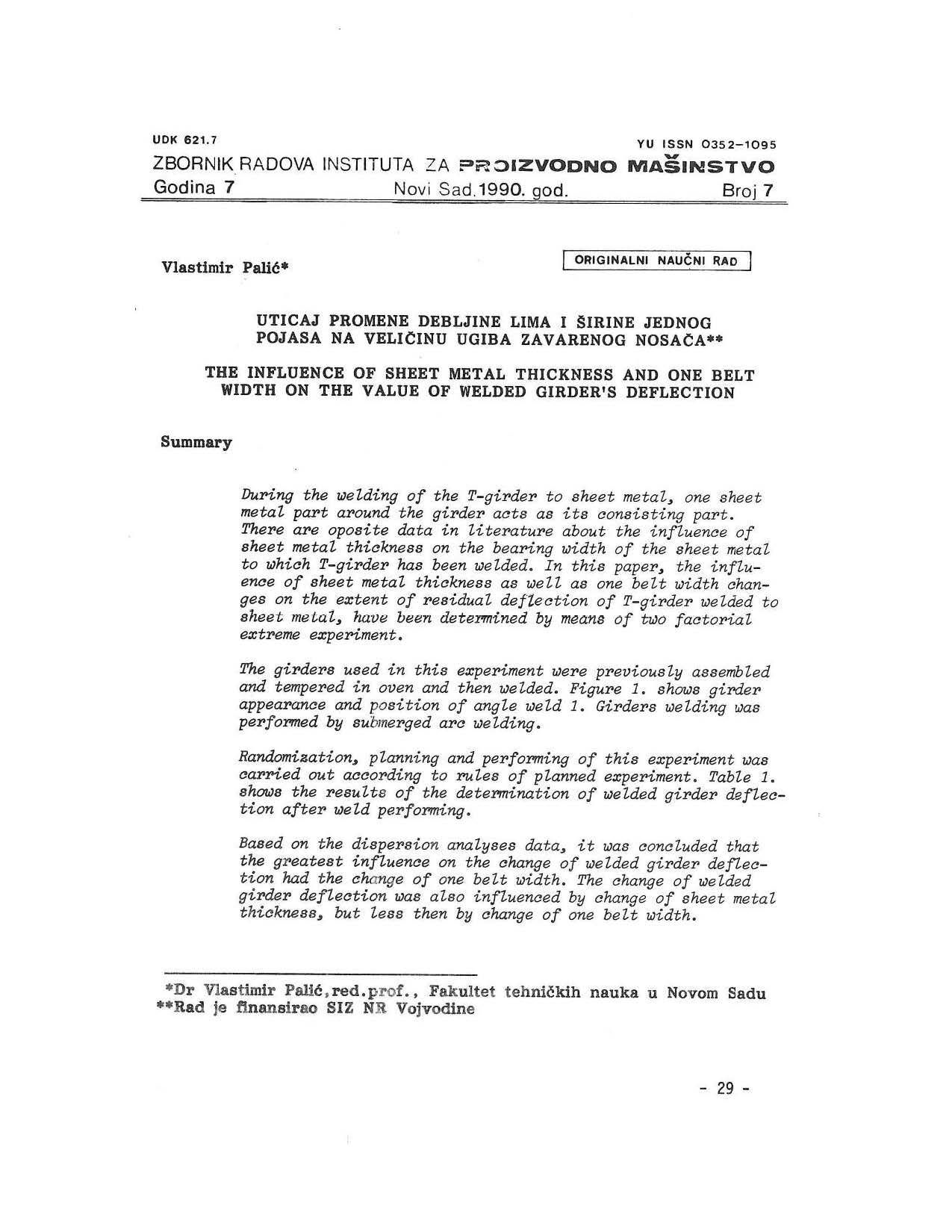The influence of sheet metal thickness and one belt width on the value of welded girder's deflection

Published 1990-12-01
abstract views: 7 // FULL TEXT ARTICLE (PDF): 5
How to Cite
Copyright (c) 2023 Journal of Production Engineering

This work is licensed under a Creative Commons Attribution 4.0 International License.
Abstract
During the welding of the T-girder to sheet metal, one sheet metal part around the girder acts as its consisting part. There are oposite data in literature about the influence of sheet metal thickness on the bearing width of the sheet metal to which T-girder has been welded. In this paper, the influence of sheet metal thickness as well as one belt width changes on the extent of residual deflection of T-girder welded to sheet metal., have been determined by means of two factorial extreme experiment. The girders used in this experiment were previously assembled and tempered in oven and then welded. Figure 1. shows girder appearance and position of angle weld 1. Girders welding was performed by submerged arc welding. Randomization, planning and performing of this experiment was carried out according to rules of planned experiment. Table 1. shows the results of the determination of welded girder deflection after weld performing. Based on the dispersion analyses data, it was concluded that the greatest influence on the change of welded girder deflection had the chrnge of one belt width. The change of welded girder deflection was also influenced by change of sheet metal thickness, but less then by change of one belt width.

